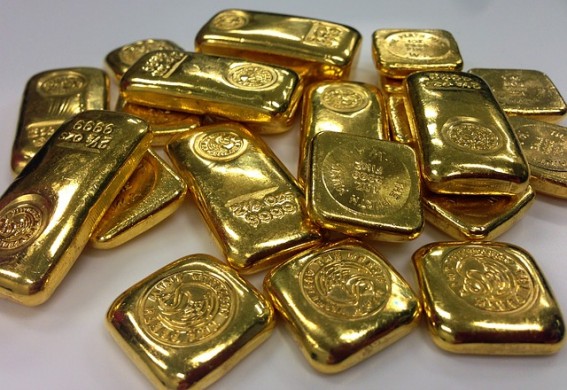Some bubbles are caused by a widespread feeling that things are getting better, that an asset class, or many asset classes, are going to deliver terrific income flows to those who own them. So the mob descends, buying up those assets in a frenzy of common believe, whether caused by erroneous extrapolation, a grain of truth blown out of proportion or plain ignorance.

These bubbles can be self-sustaining in a mass hysteria sort of way. But there is another factor which can push a bubble along – the deliberate fraudster. His job is made so much easier when people refuse to think: As Bertrand Russell said: “Most people would rather die than think: many do.”
Because bubbles, and the criminals that go with them, keep arising and are likely to do so again in your lifetime I thought it useful to look at three historic cases where supposedly intelligent people were fooled – it’ll happen again (many times) – the South Sea Bubble, Railway Mania and the British canals.
South Sea Bubble
Issac Newton famously said of the investor interest in the South Sea enterprise in 1720 “I can calculate the motions of the heavenly bodies, but not the madness of people”. In spring 1720 he sold his South Sea shares after they doubled for £7,000.
A few months later, caught up in the mania, he bought a larger holding near the top of the market and lost £20,000.
The story begins with the expansion of the supply of money, but the South Sea bubble was caused primarily by a swindle.
The company was created in 1711 to consolidate and reduce the national debt. At the time, each government department was issuing its own debt as the need arose. It was all very random and disorganised.
The plan was to force holders of government debt to swap it for shares in the South Sea Company. The government would pay the Company 6% per year (later 4% and 5%) which would be distributed as a dividend to the shareholders.
But the Company had something else. It purportedly offered rich rewards through the operation of a monopoly on South Atlantic trade. Just imagine: All the goods flowing between the UK and booming South America coming through one company. If the East India Company was anything to go by then fortunes could be made!
Echo: Just imagine: if the next internet start-up can create a virtual monopoly through a strong network effect then all will go well. If Facebook, Uber or AirBNB are anything to go by fortunes could be made!
There was a small problem: Spain had control in that part of the world and was at war with Britain, and so it was unlikely that British traders had much hope of breaking in.
No matter. The share salesmen persuaded many that there would be vast wealth from South American trade.
There are a few small problems for internet start-ups too, e.g. hundreds of companies with similar target segments – only one or two will survive. Also, the big boys with tens of billions to spare have a habit of entering a market that shows promise and squashing the competition (e.g. Facebook buying Instagram, or the current rush by the establish companies to get into on virtual and augmented reality).
Back to the eighteenth century – newly established banks were offering credit to share buyers which help fuel the bubble.
The founders were crooks who engaged in insider trading by using their knowledge of when government debt was to be consolidated to make profits by buying the debt in advance. They bribed politicians to enrich themselves. Leading members of British society were offered a return on the increase of price of allocated shares. This gave them an incentive to persuade others to buy and push up the price (investment bankers selling shares today?).
Directors would borrow from the Company using their shareholdings as collateral. Much of the money was used to buy shares in the Company. Thus we have a circular motion of insider dealing and propping up the share price.
Later they bought landed estates (John Blunt, the leader, was in the process of buying six estates at the time of the collapse).
The first sign of trouble was when an announcement was made that the Christmas 1719 dividend would be deferred for a year. Despite this investors kept buying because of the “most extravagant rumours” of the value of the trade to come in South America. There was a speculative frenzy as the shares went up nine-fold in few months.
In June, July and August of 1720 there were repeated attempts to raise cash through new share issues.
The share dropped from over £1,000 to £100 between August and December. Many who had borrowed to invest faced bankruptcy. Thousands were ruined.
Corruption also played a part in the 1990s stock market boom, for example, Enron, Tyco, MCIWorldCom, and, of course, the promotion of tech companies to naïve investors.
Likewise in the 2002-7 period there were insane incentives to push sub-prime mortgages – investment bankers dumped rubbish on to late comers.
I wonder what we’ll see when the tide goes out on this market boom?
UK railway boom in 1840s
Stage one: before 1843 shares were sold to hard-headed members of chambers of commerce, Quaker capitalists, Lancashire businessmen and industrialists. This was no bubble because the buyers of shares could rationally estimate the beneficial business effects of the new technology on other businesses and on households. Realistic expectations could be made of the income flows to shareholders.
Large profits were made.
Stage two: After 1843 professional company promoters (many corrupt) tempted a different class of “investor”, e.g. ladies and clergymen, caught up in euphoria. Finance providers were so enthusiastic they paid little attention to the matter of business operating profits needed to generate returns for lenders and shareholders.
The Bank of England cut interest rates making the alternative investment to government bonds, ie. railway shares more attractive (Echo: how many institutions and individual investors are saying today that they have to ratchet up the risk level because there is such a poor return on government bonds. Thus junk bonds are zooming away, as are “bond alternatives” such as shares in branded consumer good companies, as well as the tech companies).
Leverage helped push up demand: railway shares could be bought with only a 10% deposit. Promoted as “foolproof investments” thousands of ordinary people signed up when they could only just find enough money for the 10% deposit.
Late-coming punters buy high and sell low. As Warren Buffett says “what the wise do in the beginning, the foolish do in the end”.
Such was the enthusiasm for more and more railways that 272 Acts of Parliament were passed in one year, 1846, each to set up a railway. Many were economically unviable from the outset – simply lines on a map with no consideration for difficulty of terrain or likely demand or the effect of adjacent railways.


Many of the new companies were set up by fraudsters with little………………………………To read the rest of this article, and more like it, subscribe to my premium newsletter Deep Value Shares – click here http://newsletters.advfn.com/deepvalueshares/subscribe-1

 Hot Features
Hot Features











